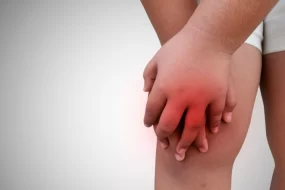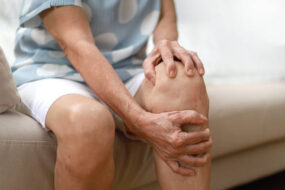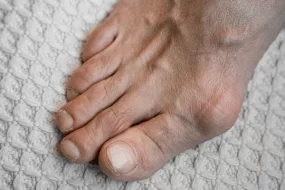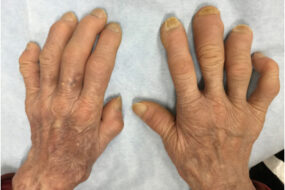- Home
- INTERNAL MEDICINE
- Hepatitis A

Hepatitis A infection is a highly contagious condition caused by the hepatitis A virus. The virus belongs to the picornavirus group of enteroviruses. It’s a self-limited infection, and chronic disease doesn’t occur. It is transmitted via the fecal-oral route and is highly infectious. The infection is common in children (although the incidence has reduced due to vaccination) and in areas of poor sanitation and overcrowding. Infection confers lifelong immunity.
Pathophysiology– hepatic injury occurs due to the host’s response to the virus. Damage is mediated by CD8+ cells and natural killer cells. Severe hepatitis is due to an excessive hoist response
Clinical presentation
Incubation- 2 to 6 weeks
2 phases;
1. Prodromal phase (1 to 2 weeks)
- Abrupt onset of nausea, vomiting, fever, malaise, anorexia, and right upper quadrant abdominal pain
- Tender hepatomegaly
2. Icteric phase-
- Dark urine
- Pale stools
- Jaundice and pruritus
Extrahepatic manifestation;
- Arthralgias
- Skin rash
- Preterm labor and gestational complications in pregnant women
Investigations
1. Serology
- Anti HAV antibodies of the IgM type are diagnostic
- IgG is a marker of previous infection, and thus, immunity
2. Liver function tests- raised aminotransferases, serum bilirubin, and ALP
Complications
- Fulminant hepatic failure in 0.1%
- Relapsing hepatitis
- Cholestatic hepatitis
- Autoimmune hepatitis
Differential diagnosis
- Hepatitis B, C, D, and E
- Yellow fever virus
- EBV, CMV, HSV
- HIV infection
- Drug-induced hepatitis
Management
- Supportive- mainstay
- Drugs that may cause injury to the liver should be used with caution
- Manage dehydration
- Rest
- Antiemetics
- Advice on alcohol avoidance
- Aggressive supportive therapy in fulminant hepatic failure
Prevention
- Improving social conditions
- Vaccination;
- Those with chronic Hepatitis B or C
- Pregnant women at risk of infection
- Individuals≥1yr with HIV
- Children 12 to 23 months old
- Those at increased risk, e.g., homeless people, men who have sex with men, those with occupational risk
- Immune globulin;
- It can be given in addition to the vaccine or alone. It offers passive immunity. The vaccine is, however, superior.
- Post-exposure prophylaxis to;
- Close personal contacts of a patient confirmed to have the disease
- Child care centre contacts
- Food handlers












